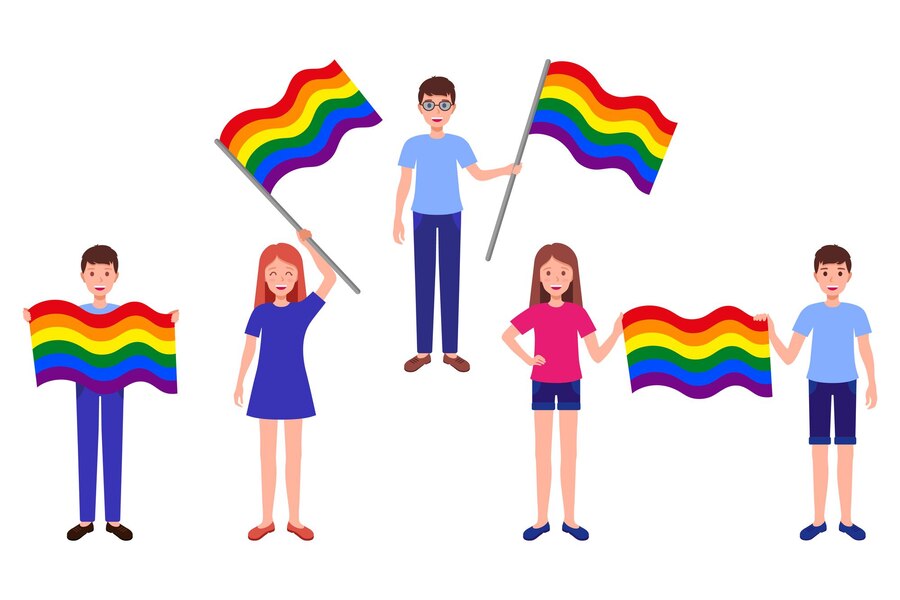
lesbian flag have long been powerful symbols of identity, pride, and solidarity. The lesbian flag is no exception. This vivid emblem represents not just a group but a rich tapestry of experiences, struggles, and triumphs within the LGBTQ+ community. In this blog post, we will explore the history, meaning, and significance of the lesbian flag, uncovering its evolution and the impact it has had globally.
lesbian flag colors are more than just aesthetically pleasing stripes; each hue carries profound significance. The current version of the flag features seven stripes, each representing different aspects of lesbian identity.
These colors collectively paint a picture of diversity, strength, and unity within the lesbian community.
 The lesbian flag, like many symbols, has undergone significant changes since its inception. The original “Lipstick Lesbian” flag was created in 2010 by Natalie McCray. It featured a red kiss mark in the top left corner, symbolizing femininity. However, this design faced criticism for not being inclusive of all lesbians, particularly those who do not identify with femininity.
The lesbian flag, like many symbols, has undergone significant changes since its inception. The original “Lipstick Lesbian” flag was created in 2010 by Natalie McCray. It featured a red kiss mark in the top left corner, symbolizing femininity. However, this design faced criticism for not being inclusive of all lesbians, particularly those who do not identify with femininity.
In response, the flag was redesigned to better represent the entire spectrum of lesbian identities. The new seven-striped version, which emerged in 2018, has gained wider acceptance and recognition. It removed the kiss mark and introduced more inclusive colors, reflecting the diverse experiences within the lesbian community.
The lesbianflag has become an important symbol within the LGBTQ+ community, appearing at pride parades, protests, and social media campaigns. Its global recognition has helped foster a sense of belonging and visibility for lesbians everywhere.
Various organizations and events now proudly display the lesbianflag, acknowledging its significance in the fight for equality and acceptance. The flag’s presence in popular culture and media also contributes to greater awareness and understanding of lesbian issues, making it a vital tool in the ongoing struggle for LGBTQ+ rights.
 Despite its widespread recognition, the lesbianflag has not been without controversy. Debates have arisen over its design, inclusivity, and representation. Some argue that the flag still does not adequately capture the full spectrum of lesbian identities, while others believe it is a powerful and unifying symbol.
Despite its widespread recognition, the lesbianflag has not been without controversy. Debates have arisen over its design, inclusivity, and representation. Some argue that the flag still does not adequately capture the full spectrum of lesbian identities, while others believe it is a powerful and unifying symbol.
One notable controversy involved the exclusion of certain groups within the lesbian community, such as butch and non-binary lesbians. These debates highlight the ongoing need for dialogue and inclusivity within the LGBTQ+ community, ensuring that all voices are heard and represented.
The lesbianflag is more than just a colorful banner; it is a symbol of identity, pride, and solidarity. Its history, meaning, and evolution reflect the diverse experiences and struggles of the lesbian community. By understanding and supporting the lesbianflag, we can contribute to a more inclusive and accepting world.
It is a long established fact that a reader will be distracted by the readable content of a page when looking at its layout. The point of using Lorem Ipsum is that it has a more-or-less normal distribution
contact us : laynmade5@gmail.com